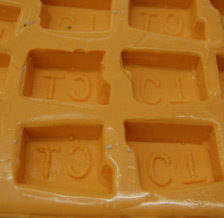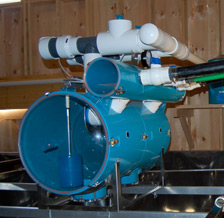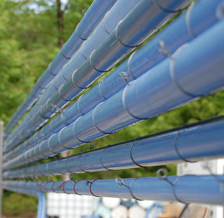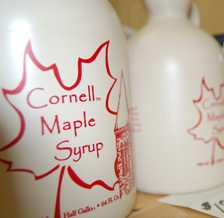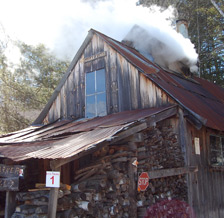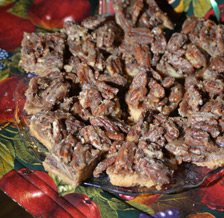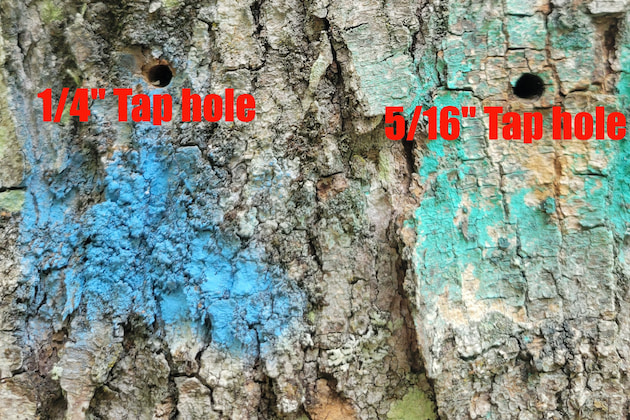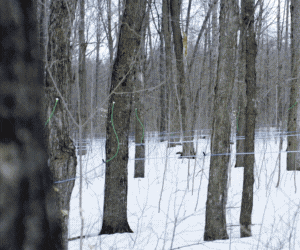Cornell Corner
More results on 1/4 and 3/16 spouts from Cornell Maple Program
Cornell researchers complete four year study
By ADAM WILD, DIRECTOR CORNELL UNIVERSITY UIHLEIN MAPLE RESEARCH FOREST | SEPTEMBER 23, 2025
LAKE PLACID, N.Y.—For the past four years, we have been testing impacts on sap yield when tapping with a smaller diameter tap hole at Cornell University’s Uihlein Maple Research Forest in Lake Placid, NY.
New to report this year is two years of data with 3/16” diameter spouts.
Having a smaller diameter spout has the potential of creating narrower compartmentalized wounds within a tree.
This is beneficial for trees that have been tapped for many decades and trees growing on marginal soil or short growing seasons.
During the four maple seasons of 2022-2025 we tested sap yield from 5/16 (0.3125) inch diameter tap holes and 1/4 (0.25) inch diameter tapholes.
In the three seasons of 2022-2024 we tested 9/40 (0.225) inch diameter tap holes. In 2024 and 2025 we added 3/16 (0.1875) inch spouts made by DSD.
During 2023 and 2024 we also tested the short barrel barbed spouts made by Middle Valley Maple that are 5/16-inch in diameter but claim to increase yield by blocking less wood within the tree.
Each tap hole diameter was replicated three times (4-19 taps per replicate) in 2022, five times (4-20 trees per replicate) in 2023 and 2024, and three times (5-20 taps per replicate) in 2025.
Different spouts were randomly moved within replicate blocks each year so that production data did not come from the same trees with the same size spout each year.
Tree diameter was normalized within each replicate block. All spouts were thinner wall polycarbonate spouts.
Vacuum was applied to the tubing throughout each season and maintained around 24-25 in/hg at 2,100 ft in elevation. Sap volume was collected from each replicate after each sap run.
Total sap volume across the season was averaged per tap/tree from each replicate.
Production volume from the 5/16-inch diameter tapholes was considered 100% of production as the industry standard.
Yields from other taps are given in percentage increases or decreases above or below the 5/16-inch diameter spouts.
After four years of data collection, we did not see a drop in sap production with the smaller diameter quarter inch spouts.
Note that the 0.225-inch spout was not tested in 2025 but after three years of data there was not a drop in production either.
We now have two years of data on 3/16-inch diameter spouts.
The first year did not see a significant drop in production but this past season the 3/16-inch spouts yielded an average of 7% less sap.
With the two-season average this is only a 4.3% drop in production.
Although not tested this season, two years of data on the short barrel barbed spouts did not yield an increase or decrease in sap production compared with traditional maple spouts.
Note that there was variation in all replications as shown in the error bars of figure 1 (standard deviation).
After four years of data collection at the Cornell University Uihlein Maple Research Forest there does not appear to be a significant change in production on quarter in spouts.
Larger diameter tap holes should in theory yield more sap, but smaller diameter tapholes have less surface area which could reduce micro leaks in high vacuum systems.
With enough vacuum, it appears that the smaller diameter spouts still produce similar yields of sap.
With two years of data, the 3/16-inch spouts may produce slightly less sap but this is not significant and but more years of testing are needed.
Even if smaller diameter tapholes produce less sap, this could potentially be beneficial in applications where trees are slow growing and decreasing wound potential would be more beneficial for the long-term sustainability of tapping.
However, more work is needed to better understand non-conductive wood formation from smaller diameter tap holes.
With low levels of vacuum or no vacuum, smaller spouts would most likely yield less sap.
Based on three years of yield data, we decided to tap half of the Uihlein Forest production woods with quarter-inch spouts during the 2025 maple season and it did not seem to impact our yields.
Smaller diameter tap holes are easier to drill and less likely to hit compartmentalized wood from previous tap holes.
After drilling a couple thousand holes with a quarter-inch bit, the switch back to a 5/16-inch bit felt as if I was taking an ice fishing auger to the tree.
It was surprising how much larger the bit felt.
Acknowledgement: The project was possible thanks to funding from the Northern New York Agriculture Development Program.




